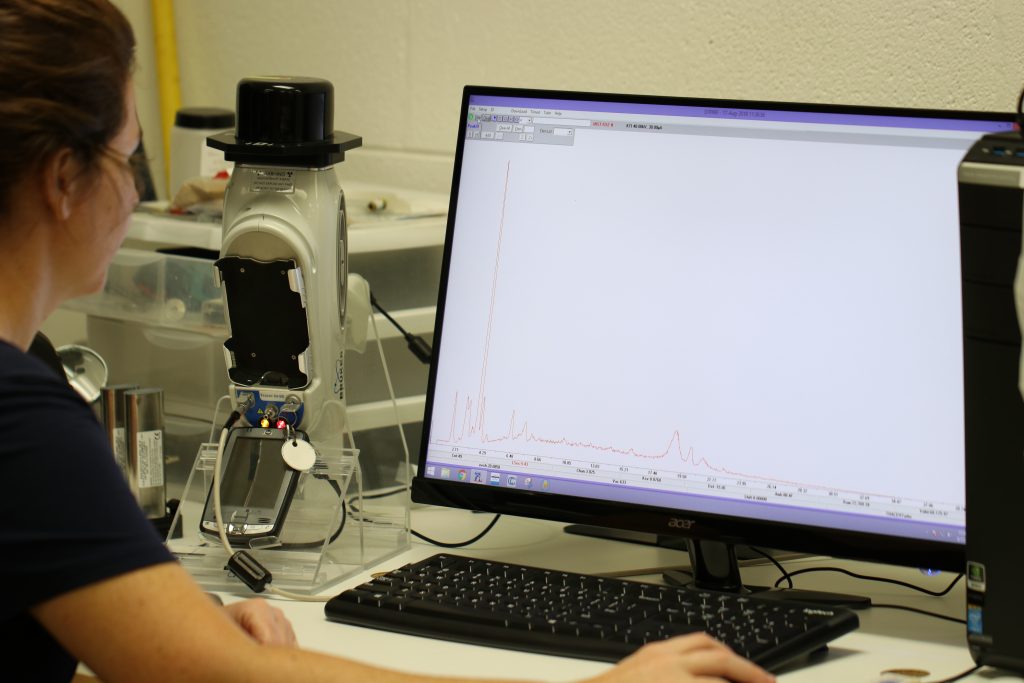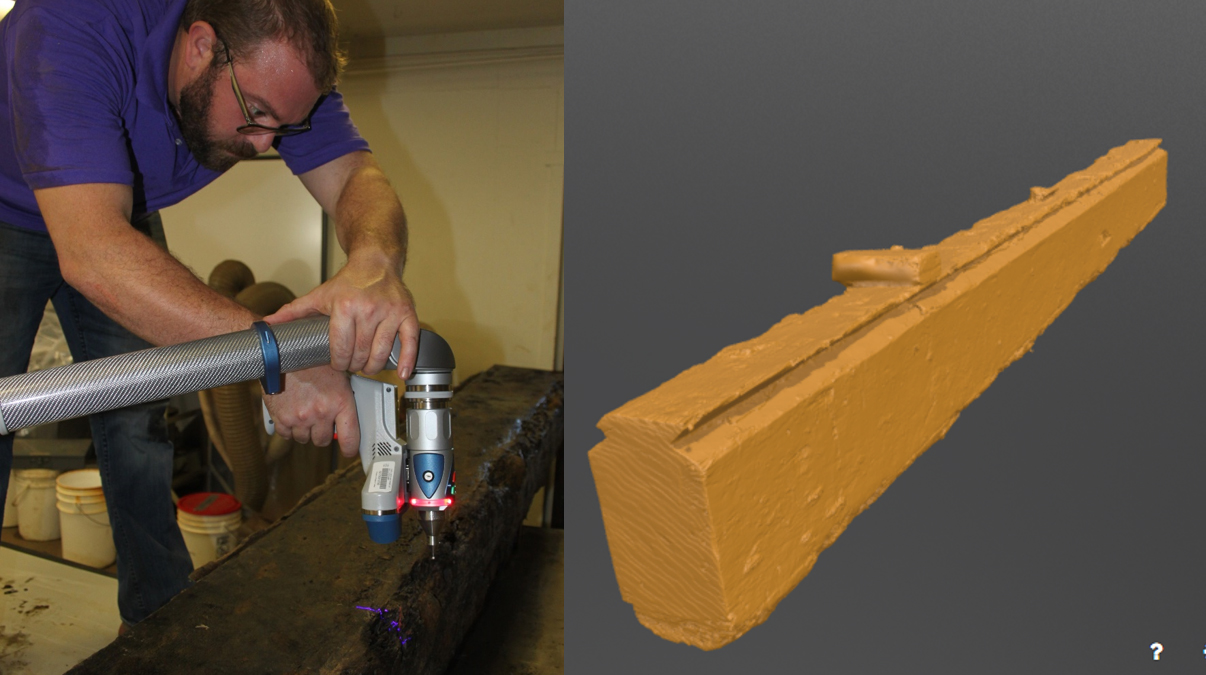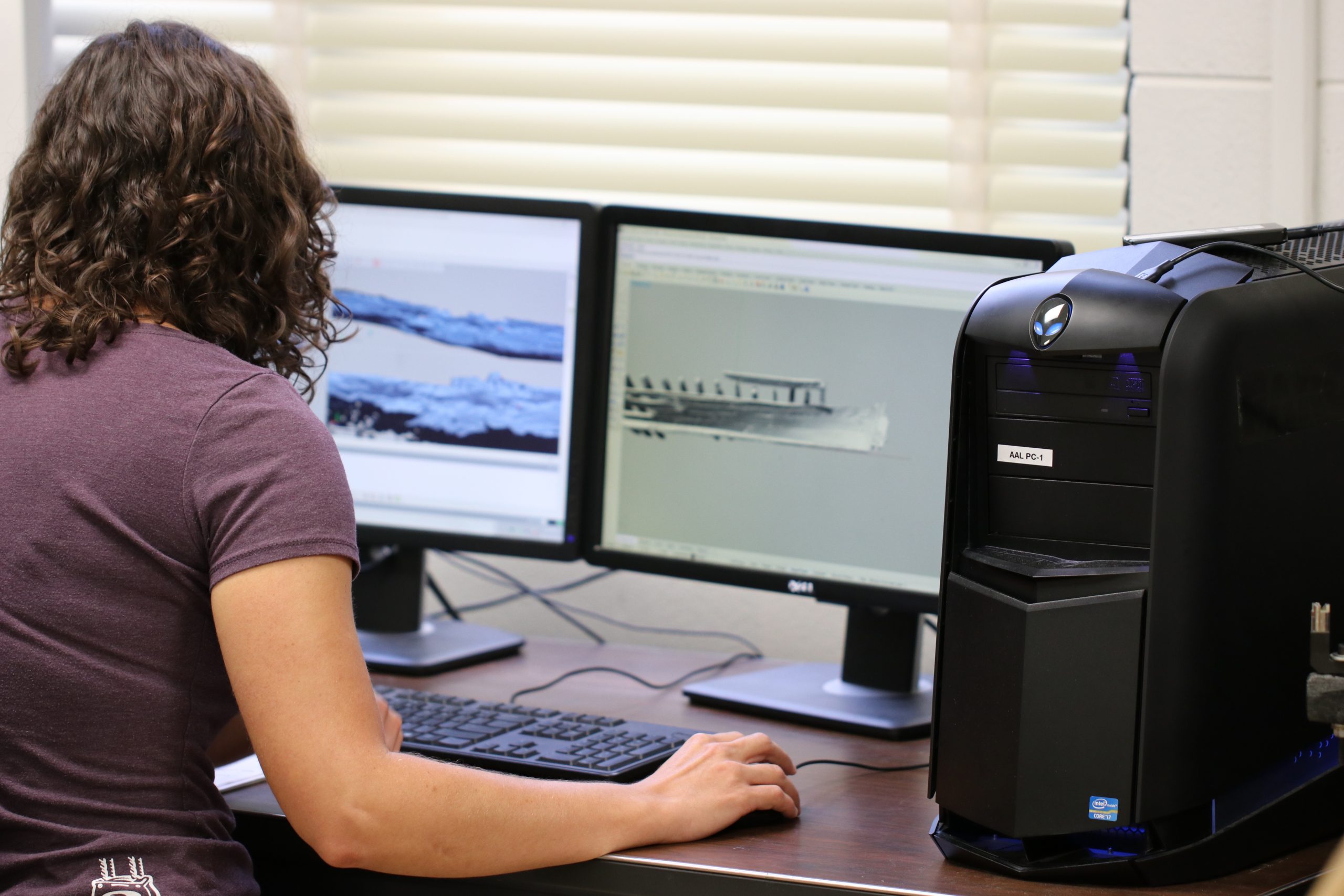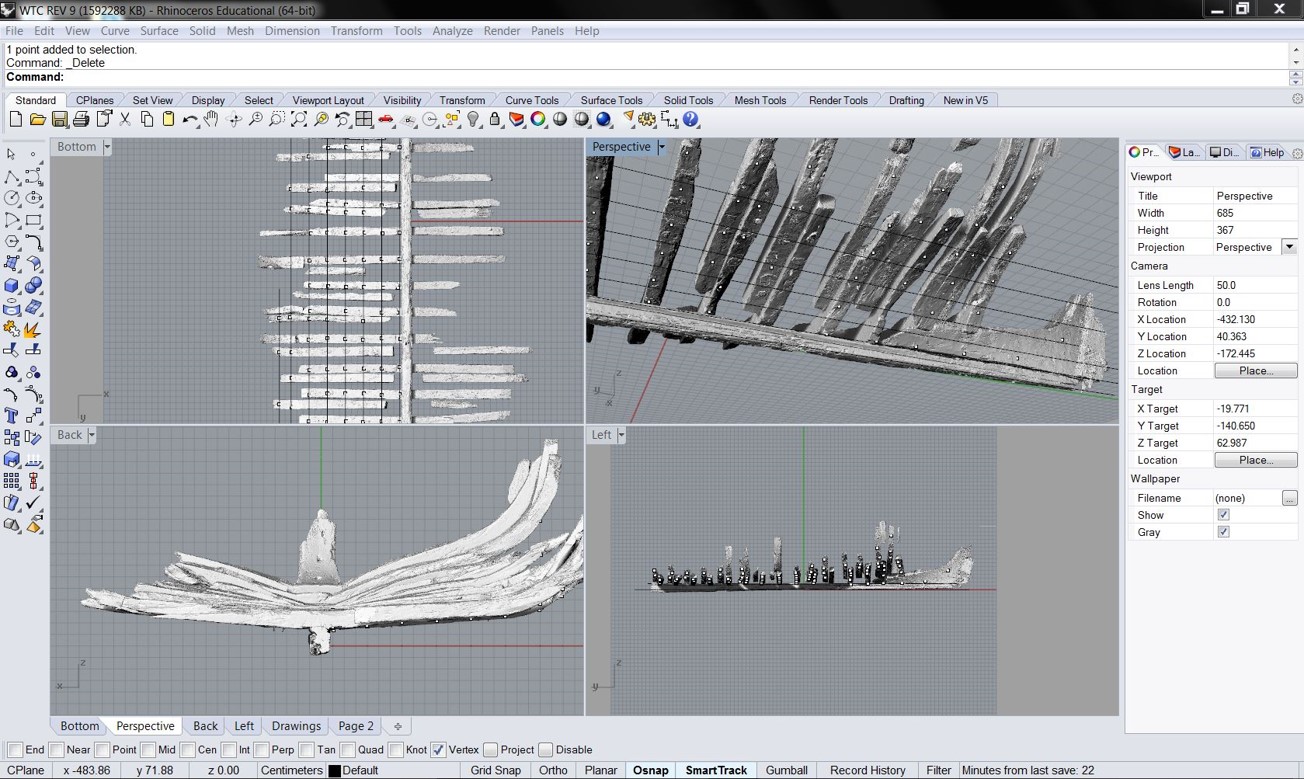Analytical Archaeology Laboratory
The Analytical Archaeology Laboratory (AAL) was established in 2018 as a new laboratory for the Center for Maritime Archaeology and Conservation (CMAC) in the Anthropology Department at Texas A&M University. Our mission is to expand our knowledge of nautical archaeology through technology. Be it laser scanning, XRF analysis, photogrammetry, or microscopy, the AAL is the CMAC hub for cutting-edge documentation and analysis techniques.
Director
Christopher Dostal is an Assistant Professor of Anthropology. He is the director of the Analytical Archaeology Laboratory and the Associate Director of the Conservation Research Laboratory at the Texas A&M University System RELLIS campus. His research focuses on historic-period wooden shipbuilding from North America and the conservation of waterlogged archaeological artifacts.
Facilities
X-Ray Fluorescence
The AAL utilizes a Bruker Tracer III-SD portable XRF detector for elemental analysis to support research in the Department of Anthropology. Our XRF research is wide ranging, encompassing everything from historic paint pigment to Bronze Age metal ingots.

Laser Scanning
The AAL laser-scanning capabilities include a FARO ScanArm and several NextEngine HD portable laser scanners. Current projects include the digitization and virtual reconstruction of the World Trade Center ship, the Alexandria, VA 19th century ship, the CSS Georgia, and others. We have also worked with Texas A&M University engineering students, and encourage and support multi-disciplinary research objectives.

Computer Vision Photogrammetry
The robust computing resources and our photographic capabilities mean the AAL is a premiere laboratory for photogrammetric 3D modeling of archaeological artifacts and sites. Our lab has aided in the photogrammetric modeling of the Toronto City Place Schooner project, the 19th century steamboat Phoenix II, the CSS Georgia, the World Trade Center Ship, and many more. Students are encouraged to utilize our computing resources for their photogrammetric components of their research projects.
3D Printing
The AAL has two fused filament fabrication 3D printers, the Zortrax m200 and the Lulzbot Taz 6. Along with artifact replication for teaching and research, we are using 3D printing technology to print scaled copies of the laser-scanned timbers from the World Trade Center ship and the Alexandria, VA 18th century ship and reassembling a scaled model of these vessels.
Computer Modeling
Our computing and software resources allow the AAL to virtually reconstruct entire vessels discovered through archaeological research. Currently, both the World Trade Center ship and the Alexandria, VA 18th century ship are being virtually reassembled to discover what the ships would have looked like and how they would have functioned when they were in use.


Photography
A wide variety of photographic equipment and lighting resources means the AAL is ideal for photographing everything from microscopic artifact details to entire sites. Artifact photography is fundamental to archaeological investigation, and we utilize our capabilities to share our research as widely as possible.
